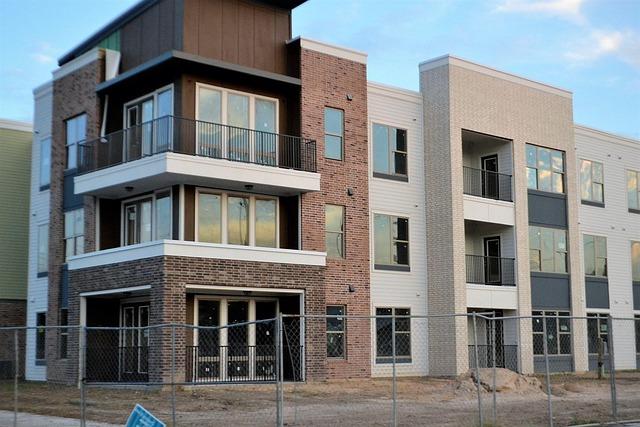When commercial properties sit vacant, they often become vulnerable to a range of risks that active buildings might not face. From potential vandalism and theft to unforeseen damages and liability concerns, the challenges of insuring an unused property are unique and complex. Understanding how to properly insure vacant commercial properties is essential for property owners and investors who want to protect their assets and mitigate financial exposure. In this article, we’ll explore key insurance tips that can help you navigate the intricacies of vacant property coverage and ensure your investment remains safeguarded during periods of inactivity.
Table of Contents
- Understanding the Unique Risks of Vacant Commercial Properties
- Choosing the Right Insurance Coverage for Extended Vacancies
- Implementing Security Measures to Lower Insurance Costs
- Regularly Reviewing and Updating Your Insurance Policy
- Concluding Remarks
Understanding the Unique Risks of Vacant Commercial Properties
Vacant commercial properties present a distinct set of challenges that differ significantly from occupied buildings. Without regular activity, these properties are more vulnerable to risks such as vandalism, theft, and accidental damages caused by unnoticed maintenance issues. The lack of daily oversight makes it easier for hazards to go undetected until they’ve escalated, putting property owners at higher risk of financial loss. Moreover, environmental threats like water damage from leaks or HVAC failure can rapidly compound when left unchecked, emphasizing the importance of specialized risk assessments tailored to vacant premises.
Key vulnerabilities include:
- Increased risk of unauthorized entry and squatting
- Accelerated deterioration due to absence of climate control
- Greater exposure to fire hazards due to inactive alarm systems
- Potential for unnoticed structural damage or pest infestations
Addressing these risks requires a proactive strategy that combines rigorous property inspections with insurance policies designed specifically for vacancies. Without this focus, standard commercial insurance often falls short, leaving owners exposed. Understanding these unique factors is essential in crafting an insurance approach that safeguards both the physical asset and the investment behind it.
Choosing the Right Insurance Coverage for Extended Vacancies
When insuring a commercial property that will remain vacant for an extended period, standard policies often fall short of covering the unique risks associated with such downtime. It’s critical to evaluate insurance options that specifically address the vulnerabilities of vacant buildings, including increased susceptibility to vandalism, theft, and unnoticed maintenance issues. Opt for policies that explicitly include vacancy permits or endorsements allowing for insured coverage without penalties or policy cancellations due to prolonged vacancies. Additionally, insurers typically impose strict requirements on property upkeep and security during vacancy — failing to meet these can result in denied claims or higher premiums.
Keep these essential points in mind when selecting your coverage:
- Extended vacancy clauses: Ensure your policy clearly defines and accommodates vacancy periods beyond the industry standard 30 or 60 days.
- Specialized risk coverage: Look for protection against common vacant property risks such as water damage, fire caused by unnoticed electrical faults, and squatters.
- Maintenance obligations: Understand the insurer’s requirements for regular inspections, heated systems, and security measures during vacancy to maintain coverage validity.
- Liability considerations: Confirm that liability is covered if someone is injured on the property during the vacancy period.
By proactively addressing these factors, you can mitigate financial exposure while your commercial property stands empty, making sure insurance truly works for you throughout the entire vacancy period.
Implementing Security Measures to Lower Insurance Costs
Investing in robust security solutions is a strategic move that not only protects your vacant commercial property but also significantly reduces insurance premiums. Insurers favor properties equipped with advanced security features, as they mitigate risks associated with vandalism, theft, and unauthorized access. Key implementations include installing alarm systems connected to local law enforcement, deploying CCTV cameras with 24/7 monitoring, and ensuring all entry points have reinforced locks and barriers. Properties that demonstrate active risk management often benefit from discounted insurance rates, reflecting their lower claim likelihood.
Beyond technology, integrating routine security patrols and maintenance checks can deter potential criminal activity and address vulnerabilities promptly. Consider incorporating:
- Motion-activated lighting: Illuminates dark areas to discourage trespassers.
- Perimeter fencing: Creates a clear physical boundary to prevent unauthorized entry.
- Secure storage for valuable equipment: Minimizes theft risk during vacancy.
By systematically enhancing security infrastructure and demonstrating proactive risk reduction efforts, property owners position themselves for more favorable insurance terms while preserving the integrity of their asset.
Regularly Reviewing and Updating Your Insurance Policy
Consistently revisiting your insurance coverage is essential as the status and risks associated with a vacant commercial property can evolve quickly. Property deterioration, changes in market value, and alterations in local regulations all impact the adequacy of your current policy. By setting a routine schedule—ideally bi-annually or whenever significant changes occur—you can ensure your coverage accurately reflects the property’s condition and potential liabilities. This proactive approach not only minimizes gaps in protection but also helps in renegotiating premiums to better align with your property’s risk profile.
When updating your policy, consider the following key areas to review:
- Replacement cost values: Reflect inflation and material cost changes to avoid underinsurance.
- Liability coverage limits: Adjust to cover new potential exposure risks.
- Exclusion clauses: Examine any newly added clauses that could limit coverage.
- Security requirements: Ensure compliance with current insurer mandates to maintain validity.
Keeping communication lines open with your insurance agent can facilitate timely updates and clarify policy details, ultimately strengthening your defense against unforeseen losses while your property remains unoccupied.
Concluding Remarks
In conclusion, insuring vacant commercial properties requires careful consideration and proactive planning. By understanding the unique risks involved and working closely with your insurance provider, you can secure coverage that protects your investment during periods of vacancy. Remember to regularly review your policy, maintain property security, and stay informed about local regulations to avoid unexpected gaps in protection. Taking these key steps not only safeguards your asset but also provides peace of mind as you navigate the challenges of managing vacant commercial spaces.







